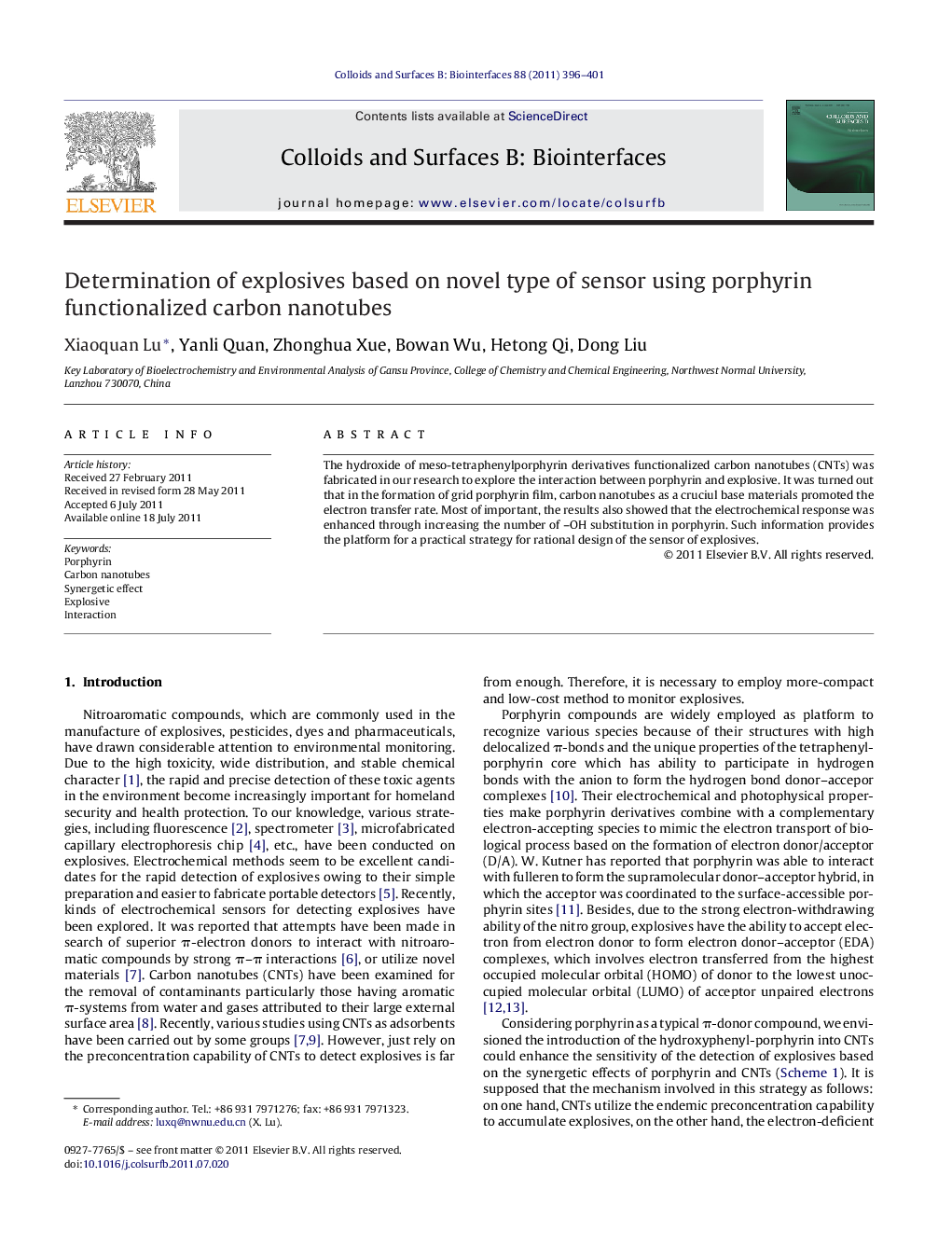| Article ID | Journal | Published Year | Pages | File Type |
|---|---|---|---|---|
| 601071 | Colloids and Surfaces B: Biointerfaces | 2011 | 6 Pages |
The hydroxide of meso-tetraphenylporphyrin derivatives functionalized carbon nanotubes (CNTs) was fabricated in our research to explore the interaction between porphyrin and explosive. It was turned out that in the formation of grid porphyrin film, carbon nanotubes as a cruciul base materials promoted the electron transfer rate. Most of important, the results also showed that the electrochemical response was enhanced through increasing the number of –OH substitution in porphyrin. Such information provides the platform for a practical strategy for rational design of the sensor of explosives.
Graphical abstractSchematic representation of electrochemical sensing explosives. (A) The CNTs to glass carbon electrode surface; (B) the electropolymerization porphyrin to CNTs surface; (C) explosive adsorbs to the functionalized film; (D) electrochemical stripping detection of explosive..Figure optionsDownload full-size imageDownload as PowerPoint slideHighlights► The hydroxide of meso-tetraphenylporphyrin derivatives functionalized carbon nanotubes was successfully fabricated. ► Carbon nanotubes acted as the crucial base materials to form the grid porphyrin film. ► The electrochemical response to explosives was enhanced by increasing the number of –OH substitution in porphyrin. ► The ability of nanocomposite to detect explosive was attributed to the endemic preconcentration capability of CNTs and the strong electron donor of porphyrin.
